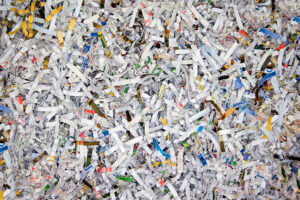Regulated medical waste (RMW) presents unique challenges and responsibilities in healthcare settings. This white paper provides a comprehensive overview of RMW, including its classification, management, and disposal methods. Emphasizing the importance of regulatory compliance and environmental stewardship, this paper aims to serve as a valuable resource for healthcare professionals and facilities navigating the complexities of RMW management.
Introduction: Regulated medical waste encompasses a diverse array of materials generated in healthcare facilities that pose potential risks to public health and the environment. Proper management of RMW is essential to ensure compliance with regulatory requirements and minimize hazards associated with its handling and disposal. This white paper delves into the various types of RMW, regulatory frameworks governing its management, and best practices for safe handling and disposal.
Understanding Regulated Medical Waste: Regulated medical waste encompasses several categories of waste materials, each with its unique characteristics and disposal requirements:
- Sharps Waste: Sharps waste includes needles, syringes, lancets, and other sharp objects used in medical procedures. Due to their potential to cause injury and transmit infectious diseases, sharps must be collected and disposed of in puncture-resistant containers.
- Infectious Waste: Infectious waste consists of materials contaminated with potentially infectious agents, such as blood, bodily fluids, and laboratory cultures. Proper containment, treatment, and disposal of infectious waste are essential to prevent the spread of infectious diseases and protect public health.
- Pathological Waste: Pathological waste comprises tissues, organs, and body parts removed during surgical procedures or autopsy. Pathological waste poses unique challenges due to its potential biohazardous nature and must be handled and disposed of in accordance with regulatory guidelines.
- Pharmaceutical Waste: Pharmaceutical waste includes expired, unused, or contaminated medications, as well as chemotherapy drugs and controlled substances. Proper disposal of pharmaceutical waste is critical to prevent environmental contamination and minimize risks to human health.
- Chemical Waste: Chemical waste encompasses hazardous chemicals, solvents, and reagents used in laboratory settings. Chemical waste must be segregated, stored, and disposed of according to applicable regulations and environmental protection guidelines.
Regulatory Compliance and Guidelines: Regulated medical waste management is governed by federal, state, and local regulations aimed at protecting public health and the environment. Key regulatory frameworks and guidelines include:
- Resource Conservation and Recovery Act (RCRA): The RCRA establishes requirements for the management and disposal of hazardous waste, including certain categories of RMW.
- Occupational Safety and Health Administration (OSHA) Standards: OSHA standards address worker safety and health hazards associated with RMW handling, including bloodborne pathogens and sharps injuries.
- Environmental Protection Agency (EPA) Regulations: EPA regulations govern the disposal of hazardous waste, including pharmaceuticals and chemical substances, to prevent environmental contamination.
- State and Local Regulations: Many states and local jurisdictions have additional requirements and guidelines governing RMW management, including licensing, registration, and reporting obligations.
Best Practices for RMW Management: Implementing best practices for RMW management is essential to ensure compliance, minimize risks, and promote environmental sustainability:
- Segregation and Containment: Segregate different types of RMW at the point of generation and use appropriate containers, such as sharps containers, biohazard bags, and leak-proof bins, to prevent cross-contamination and ensure safe handling.
- Training and Education: Provide comprehensive training and education to healthcare personnel on proper RMW segregation, handling, and disposal procedures to minimize risks of exposure and promote a culture of safety.
- Use of Safety Devices and Engineering Controls: Implement safety devices and engineering controls, such as needleless systems and sharps disposal containers, to reduce the risk of sharps injuries and occupational exposures.
- Documentation and Recordkeeping: Maintain accurate records of RMW generation, handling, and disposal activities to demonstrate compliance with regulatory requirements and facilitate auditing and monitoring.
Conclusion: In conclusion, regulated medical waste management is a critical component of healthcare operations, requiring careful planning, adherence to regulatory requirements, and implementation of best practices to protect public health and the environment. By understanding the different types of RMW, regulatory frameworks, and best practices outlined in this white paper, healthcare facilities can enhance their RMW management programs, minimize risks, and ensure compliance with applicable regulations.
Furthermore, by emphasizing the SEO keyword “regulated medical waste” in online content and communications, healthcare facilities can enhance their visibility and accessibility to individuals seeking information and resources on RMW management. Through a concerted effort to prioritize regulatory compliance, safety, and environmental stewardship, healthcare facilities can effectively navigate the complexities of RMW management and contribute to a safer and healthier environment for all.










